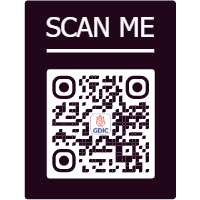Learn about the various types of sinusitis, common symptoms like facial pain and nasal congestion, and effective home remedies and medical treatments.
What is a Sinus?
The sinuses are cavities in bones located between the eyes, at the back of the cheekbones, and on the forehead. The nasal sinuses are air spaces of the nasal cavity and referred to as paranasal sinuses. There are four sinuses around the nose and are named after the bones in which they are situated.
The function of the lateral cavities is the subject of much debate, but few if they are summarized-
- The immune defense of the nasal cavity is made stronger.
- Humidifies inhaled air
- It forms mucus that keeps the inside of your nose moist, which keeps all the pollutants out of the nasal cavity.
Who is at Risk?
Individuals with the following Risk factors:
- Asthma
- Poor immune characteristics
- Laryngitis
- Bronchitis
- Meningitis
- Encephalitis
- A crooked nasal septum
- Aspirin sensitivity
- A fungus infection
- Tumors
- Allergic status that involves your sinuses
- Active or passive smoking, both are equally culpable.
Causes of Sinus
Different viruses, bacteria, and fungi can induce sinusitis.
- Bacteriology: Streptococcus pneumoniae, Haemophilus influenzae, Staphylococcus aureus, and anaerobic bacteria (Prevotella and Porphyromonas, Fusobacterium and Peptostreptococcus spp.)
- Viral Infection: the most sinusitis results from Rhinovirus, Coronavirus influenza viruses, and parainfluenza viruses are the most common sinusitis causing agents.
- Fungal Infection: few fungi are also proven to induce sinusitis, some of which include Fungal balls (mycetoma) and saprophytes.
- Pollutants such as smoke.
Nasal infection
- Swimming infected water moves into the sinuses via the ostium.
- Trauma such as Compound fractures or penetrating trauma.
- Dental Infections: commonly from the tooth in close relation to the maxillary sinus such as maxillary molars and premolars.
- Structural Issues within the Sinuses. Examples include growths on the nose and sinus lining called nasal polyps. and deviated septum.
- Smoking
- Compromised Immunity or consuming drugs that impair your immune system.
- Enlarged Tumor
Types of sinusitis
There are several types of sinusitis depending on time frame
- Acute sinusitis: It may begin immediately and persist for 2 to 4 weeks. It is characterized by cold-like symptoms like a runny nose, nasal congestion
- Subacute sinusitis: Typically lasts for 4 to 12 weeks.
- Chronic sinusitis: It is described when symptoms persist for over 12 weeks.
- Recurrent sinusitis occurs several times a year.
- Pansinusitis involves all sinuses in the head.
Signs and symptoms of sinusitis?
Generally, signs and symptoms vary according to the period elapsed but some general symptoms of sinus infections are:
- Pain in the upper jaw
- Postnasal drip (mucus running down the throat).
- Runny nose with thick mucus stuffy nose.
- Facial pressure (predominantly around the nose, eyes, and forehead).
- This can be aggravated by moving your head or bending over
- Tooth pressure or pain.
- Body temperature increased
- Halitosis (halitosis) or bad taste in the mouth.
- Cough
- Headache.
- Malaise
Certain tests that doctors order to diagnose sinus infections include:
- History taking
- X-ray examination
- Anterior and posterior rhinoscopy. Imaging.
- You undergo a computed tomography (CT) scan to have a better idea about what is going on in your sinuses.
- Allergy test. If chronic sinusitis occurs, your physician can test for any allergies that are precipitating it.
- Biopsy. A healthcare professional occasionally takes a tissue sample from the nose to test it.
Clinical Implications of chronic sinusitis:
- Recurrent nasal obstruction
- Nasal congestion due to profuse nasal discharge
- Edema of the nasal mucous membrane
- Decreased mucociliary clearance
- Dryness and sore throat
- Facial pain
- Headache
- Coughing at night
- Symptoms of asthma, which were previously mild or controlled, become worse.
- Thick yellow or green discharge
- Nose bleeds
- Sensation of fullness or tightness of the face.
Some Tests Used to Diagnose Chronic Sinusitis
- Nasal endoscopy. This is what the name implies - a tiny camera-like instrument to look at the sinus, nasal swab. Your physician will use a soft stick to get a sample of fluid from your nose and then test for viruses and other bacteria that might be responsible for your symptoms. (Book Now)
- Biopsy of the mucous membranes (Book Now)
- Allergy test (Book Now)
- MRI scan (Book Now)
Treatment of Chronic Sinusitis
Typically, the health care professionals prescribe the same drugs as acute ones but with higher doses and durations of Antibiotics. Broad-spectrum antibiotics for 3-4 weeks are administered
- Painkillers, To alleviate pain and discomfort, pain-relieving medicines such as ibuprofen and paracetamol, are typically recommended as Oral or topical decongestants.
- Surgery- In recurrent cases, surgeries may be performed to remove blockage and correct the anomalies some of which are enumerated -
- Functional Endoscopic Sinus Surgery: The primary objective of FESS is to re-establish sinus ventilation and mucociliary clearance Small fiberoptic endoscopes are introduced through the nasal cavity into the sinus cavity.
- External Spheno-Ethmoidectomy: It is a surgery where infected mucosa of the ethmoid oral cavity is excised. An incision is given to excise the infected mucosa in the lateral sinus.Next a bunch of nasal and ethmoid mucosa.Nasal antrostomy: Maxillary antrostomy is a surgery to open up the sinus window to let the here heal.
- Antrum Puncture: Below the inferior turbinate, the trochar and cannula are inserted a half inch below the turbinate. The trochar penetrated the nasoantral wall and entered the antral cavity. The trochar is removed, and the cannula is properly placed in the sinus cavity. Sterile nasal saline irrigates the sinus cavity throughout this procedure. The discharge is released from the sinus through the natural ostium. After the operation, local anesthetic is given, cannula is removed, and the nose is cleaned.
- Intranasal Antrostomy: It is a surgical procedure done wherein a permanent window close to the maxillary floor aids in drainage of discharge.
- Steroids- sometimes to decrease swelling of the lining of the sinuses, intranasal steroids are administered, in extreme cases, oral steroids are administered.
- Bioelectronic sinus device. This functions with the help of the application of microcurrents to stimulate nerve fibers in your sinuses. They are Sold as over-the-counter drugs.it allows to decrease sinus inflammation, pain, and congestion.
Home Remedies
While medicines typically work, many instances of sinusitis can be alleviated on their own, without medical intervention. Some treatments can be performed at home as well, some of them are using a
- Use a humidifier in rooms.
- steam from a bowl of warm water.can be taken
- The vapors of steam taken in comfortably congested and swollen nasal passages.
- Warm heat application.
- Try a nasal saline solution,they have no medicine in them (saline is salt water), they can keep your nasal passages moist.
- irrigating the nose with saline helps clear out mucus. They assist in thinning of the mucus, which lessens the blockage in your sinuses.
Complications in Sinusities
Acute sinusitis complications are infrequent, and severe complications are exceptional. Were they to happen, difficulties would perhaps consist of:
- Chronic sinusitis, Sinusitis is also a recurrence of a nagging problem that is known as chronic sinusitis, This chronic sinusitis persists longer than 12 weeks.
- Meningitis, This infection encourages inflammation of the fluid and membranes surrounding your brain and spine.
- Others, In some rare cases, it can spread to the bones with osteomyelitis or pores and skin, which leads to cellulitis
- Vision issues, If the infection gets into your eye socket, it may result in reduced imaginative sight or even blindness, is generally permanent
Conclusion
The sinuses are cavities in bones located between the eyes, at the back of the cheekbones, and on the forehead. Understanding its tests and complications are necessary. It could be chronic and acute. You need a best imaging centre for your sinusitis test, for which you need Ganesh Diagnostics and Imaging Centre .
FAQS
Q. What are sinuses?
Sinuses are air-filled spaces inside the bones of your face, around your nose. They're referred to as paranasal sinuses and consist of the frontal, maxillary, ethmoid, and sphenoid sinuses.
Q.What is the purpose of sinuses?
- Although their precise function is controversial, they are thought to:
- Strengthen the immune defense of the nasal cavity.
- Humidify inhaled air.
- Produce mucus to keep the nasal passages moist and free of pollutants.









